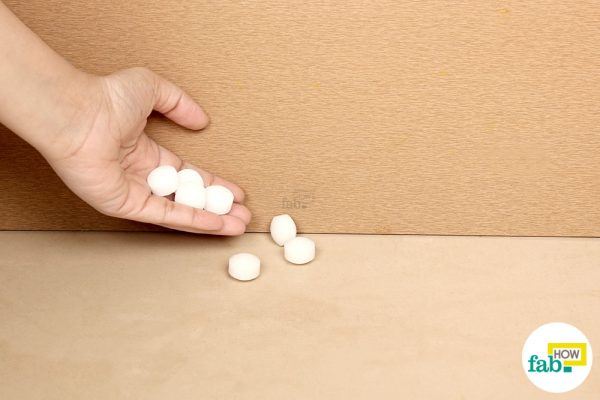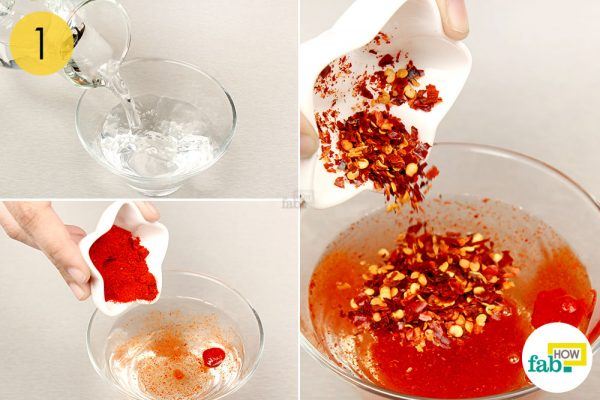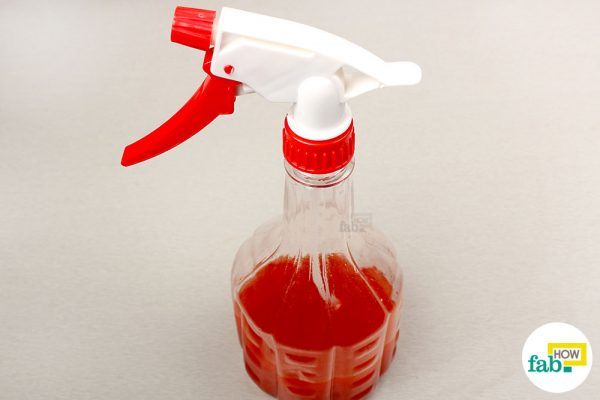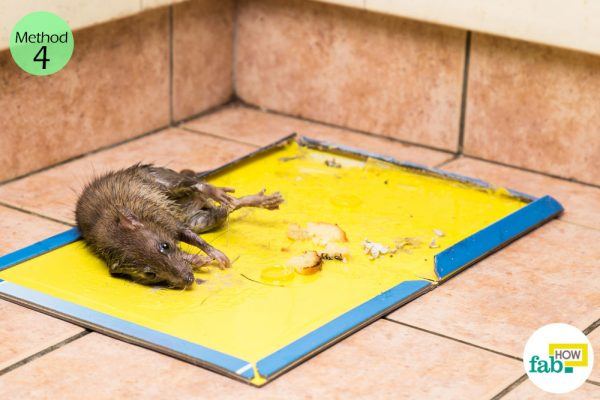Cute and cuddly, mice love to share your house with you. If you love critters, you may have no problem leaving them be. That’s until you see them scampering around in your toilet. Knowing it’s very unlikely that they clean themselves before venturing into your kitchen, it’s time to say goodbye to these rodents.
Mice, rats and many other rodent pests are naturally nocturnal. Owing to their ever-growing teeth, most of them have adapted to be voracious nibblers. The damage caused by rodents is relentless.
Although the life span of a wild mouse is just one year, they are rapid reproducers who start mating at the tender age of six weeks. They can bear up to a dozen litters in their lifetime, and each offspring in turn can have up to a dozen litters.
Exterminating mice and rats using poison is extremely cruel. Poisoned rodents not only die slowly and painfully but are also a threat to predators that may consume the dead poisoned bodies.
There are more humane ways to get rid of mice and rats – without using poison and killing them. Knowing what makes these critters tick can render your job a lot easier.
Mice and rats are creatures of habit, which makes them quite predictable. Wherever a mouse goes, it leaves behind a trail of pheromones that other mice will follow. These pathways and trails remain unchanged and are marked by feces and urine, the latter of which leaves the pheromone scent-trail.
Just using natural repellents may not be enough. Following a strategy is the most important thing when it comes to keeping mice away from the house. Blocking their entry into the house is very important. Traps and repellents are the most effective when used in the right places – along the walls and edges, and behind heavy furniture and electrical appliances like refrigerators and ovens that are rarely moved.
The trails and pathways are the areas with the most rodent activity and where you’re more likely to get success. If you’re unsure where they are, you can cover an area with talcum powder to find their tracks. Their footprints may lead you to their entry point and indoor hiding place.
Here are five safe poison free methods that can be used to rid your house of mice.
Contents
Method 1: Using Peppermint Essential Oil
Pleasant as it may smell to you, mice and other rodents are positively repelled by the scent of peppermint. That’s because the smell of the oils present in peppermint is extremely offensive, irritating and overwhelming to the heightened olfactory senses of mice.
You can easily make a spray to repel the mice from coming near your dwelling and discourage them from entering your house. A dish soap solution makes the base of the spray. The soap molecules attach themselves to the essential oil molecules, dispersing the oil throughout the solution.
Things you’ll need:
- Peppermint essential oil – 5 or 6 drops
- Dish soap – 1 tablespoon
- Water – 1 cup
Mix the ingredients in a spray bottle and use
- Pour 1 cup of water into a spray bottle through a funnel to prevent any spills.
- Add 1 tablespoon of dish soap to the spray bottle through the funnel.
- Add in about 5 or 6 drops of peppermint essential oil to the spray bottle.
- Close the spray bottle and give it a couple of shakes to thoroughly mix the ingredients.
Spray this peppermint oil solution in and near your house to repel mice. Cover all the strategic areas like mice holes, their entry points and the places they like to frequent like rafters near the roof, attics and basements.
Method 2: Using Mothballs
Mothballs act as an effective rodent repellent. One reason for that is the same as peppermint oil. They utterly dislike the smell! Another reason is the presence of naphthalene in mothballs.
When ingested or inhaled, naphthalene deprives the blood of its ability to carry oxygen, thus it can be toxic to the rodents to the point that they’ll avoid it at any cost. Caution should be observed while handling mothballs to avoid any potential harm to yourself.
Mothballs are toxic, so keep them away from pets and kids as they can be potentially life-threatening to them. When using mothballs to deter mice, you need to place them around the house in such a way that they remain inaccessible to small children and pets, as both can be voracious explorers.
Since cats can reach most of the places in your home, you should avoid using mothballs if you have a cat. However, if you do own a cat, you probably won’t have to worry about mice at all.
Place mothballs around the house to keep mice at bay
Place mothballs strategically around the house in the areas that see the most rodent activity. Focus on the areas frequented by the mice. You can identify the trails frequented by mice and rats by the presence of their feces and urine.
Method 3: Using Cayenne Pepper Spray
People use pepper spray to fend off attackers. Similarly, when mice attack your home, you can keep them at bay with this homemade pepper spray.
The capsaicin present in most hot peppers is what causes the burning sensation in any tissue the pepper comes in contact with. Small creatures like mice are unable to tolerate the burn caused by hot peppers.
This homemade pepper spray contains cayenne pepper, which is well known for its intense heat, and chili flakes. You can also add some local varieties of hot peppers to make the spray even better. What you’ve used to make your food spicy, you can now use to get rid of mice in your home.
Things you’ll need:
- Cayenne pepper powder – 1 tablespoon
- Chili flakes – 1 tablespoon
- Hot water – 1 cup
Step 1. Add cayenne pepper and chili flakes to hot water
- Pour 1 cup of hot water into a bowl.
- Add 1 tablespoon of cayenne pepper powder to it.
- Add in 1 tablespoon of chili flakes as well.
Step 2. Strain the mixture
Leave the mixture undisturbed for 24 hours to allow the cayenne pepper and chili flakes to thoroughly steep in the water.
Then place a funnel over the mouth of a spray bottle and cover the funnel with cheesecloth.
Strain the pepper water into the spray bottle through the cheesecloth.
Your homemade pepper spray is ready.
Step 3. Use the homemade pepper spray to repel mice
Apply the cayenne pepper spray over the entry points as well as the trails of the mice and rats. This burning spray will effectively keep mice and other rodents away from your house if used regularly.
Method 4: Using Glue Traps and Jail Traps
Caution: This method is not for the faint-hearted. Once trapped, the rodents will struggle fiercely to get free, which may result in torn fur and skin. Some rats will also try to gnaw their limbs off to free themselves. Remove a mouse or a rat from a glue trap as soon as you can to prevent the rodent from dying.
With any kind of mouse traps, you’ll need to be prepared to get rid of the trapped mice. Jail traps, also called cage traps, and glue traps are two options you can use for trapping mice and other rodents alive.
A variety of these traps are available in stores and can easily fit into your budget. Choose the size of the traps according to the type of rodents that you’re dealing with. If you’re in doubt, go for the larger sizes as they’ll effectively trap rats, squirrels or mice.
Jail traps have a spring door mechanism that gets activated when the mouse pulls and tugs at the bait while chewing, capturing the rodent in the cage. Glue traps are basically flat cardboard surfaces with a layer of powerful adhesive that holds the mouse in place once they walk over it.
Like most kinds of traps, these traps require bait to attract the mice and rodents. While cheese has long been touted as a favorite of mice and rats, mostly in cartoons, it doesn’t specifically appeal to them. Sure they’ll eat it, but they won’t go out of their way just to get to the cheese.
Peanut butter works like a charm and can easily be spread over glue traps to attract mice and rats. Jail traps, on the other hand, require hard and chewy bait in order to activate the spring door mechanism. Since you can’t use peanut butter here, use fried bacon instead. Bait that is sweet and sticky will keep the mouse busy until it’s trapped.
Check the traps periodically so that you can relocate the trapped mice to a natural habitat, preferably far from your house. If they get stuck in the jail traps for many hours, they may die of stress and exhaustion. Glue traps need closer supervision. If you don’t mind killing the rodents, snap traps may be a better option.
Method 5: By Blocking the Entry Points
Your laborious efforts to chase the mice and rats away from your house won’t amount to anything if you don’t block their entrance to your house. The temporary spike in food and resources will just cause other rodents to move in and take up the quarters of the previous owners.
Inspect your building or your housing unit carefully and identify any gaps and holes through which the mice or rats may enter the house. Remember that a mouse can get through a hole the size of a dime. If the head can fit through the hole, the rest of the body can be squeezed through as well.
There are many things you can use to plug up these holes and prevent the rodents from entering your residence. If the holes are too big to be filled up, you may need to make repairs.
- Steel wool is a great and reliable option to seal the entryways of mice. It is one of the few things the mice can’t chew through. If you’re worried about it rusting, you can also use copper wool. Push wads of steel wool tightly into the holes until it is completely plugged. If there is even a little space left, the mice will eventually pull it out as they’re very persistent when it comes to chewing.
- Aluminum foil is another material that you can use to plug the gaps and holes. Its smell and noisy surface repels mice, thus preventing them from exploring the plugged hole further. Just wad up some aluminum foil tightly and secure the holes with it.
- Dryer sheets can also be used to plug the holes, as mice and rats are repelled by its strong scent. You’ll need to change the dryer sheets every 3 to 4 months, as they become useless when their smell wanes and the mice may use it to make nests.
- Expanding foam is also a superb idea for closing up small holes and gaps in the house.
Additional Tips
- Continue with whichever remedy you’re using until there are no more signs of rodents in the house, such as fresh excrement or scampering and scratching sounds in the walls.
- Clean up regularly during and after getting rid of mice, as the lingering smell of the excrement will encourage more mice to enter your house.
- You might want to wear protective gloves and goggles while making or applying cayenne pepper spray. If you have respiration-related problems, you can also wear a surgical mask.
- Homemade pepper spray may cause discoloration in carpets or rugs, so use them accordingly. If you must use it on your carpet, first test it on an inconspicuous area of the carpet.
- You’ll need to change the glue traps after some time as the ‘scared mouse’ smell in the traps will render them ineffective. Cleaning the jail traps regularly should rid them of any smell that may be uninviting to the mice.
- Place a couple of dryer sheets in cabinets and dressers to deter mice. Replace the old dryer sheets with new ones every month or whenever the smell fades out.
- Plant peppermint and sage in your garden and along your house. These herbs will discourage pest activity near your house and you’ll have a bouquet of air fresheners near your house.
- Place small dishes containing several spoonfuls of carbonated drinks like Coke or Pepsi around the house. Mice die after consuming such carbonated drinks, due to the air trapped in their bodies as they cannot burp.
- Borrow an active cat from a neighbor or rent a ferret to get rid of the rodents naturally. Some smaller breeds of dogs like Jack Russell Terriers are also great at hunting small rodents.
- Keep pet food and other food items well secured to prevent foraging by rodents. Clean pet food bowls daily after the last meal of the day.
- Keep newspapers, card boards and fabrics out of the reach of rodents. Also remove wood, weeds and other debris from the residence. These materials are ideal for mice to use to make their nests.
Summary of How to Get Rid of Mice:
Download this infographic.















Thanks for the extremely great methods to rid of the critters! Appreciate your post site and wealth of information you make available to us!
I love the tips you have for getting rid of mice. It’s cool to think of using talcum powder to track where the mice in our basement are hiding.
Dear Ridley Fitzgerald,
Thank you for reading and appreciating . Stay tuned for more Fabulous DIY’s and tips and tricks.
And just to make quite sure method number twenty one , the mousing cat